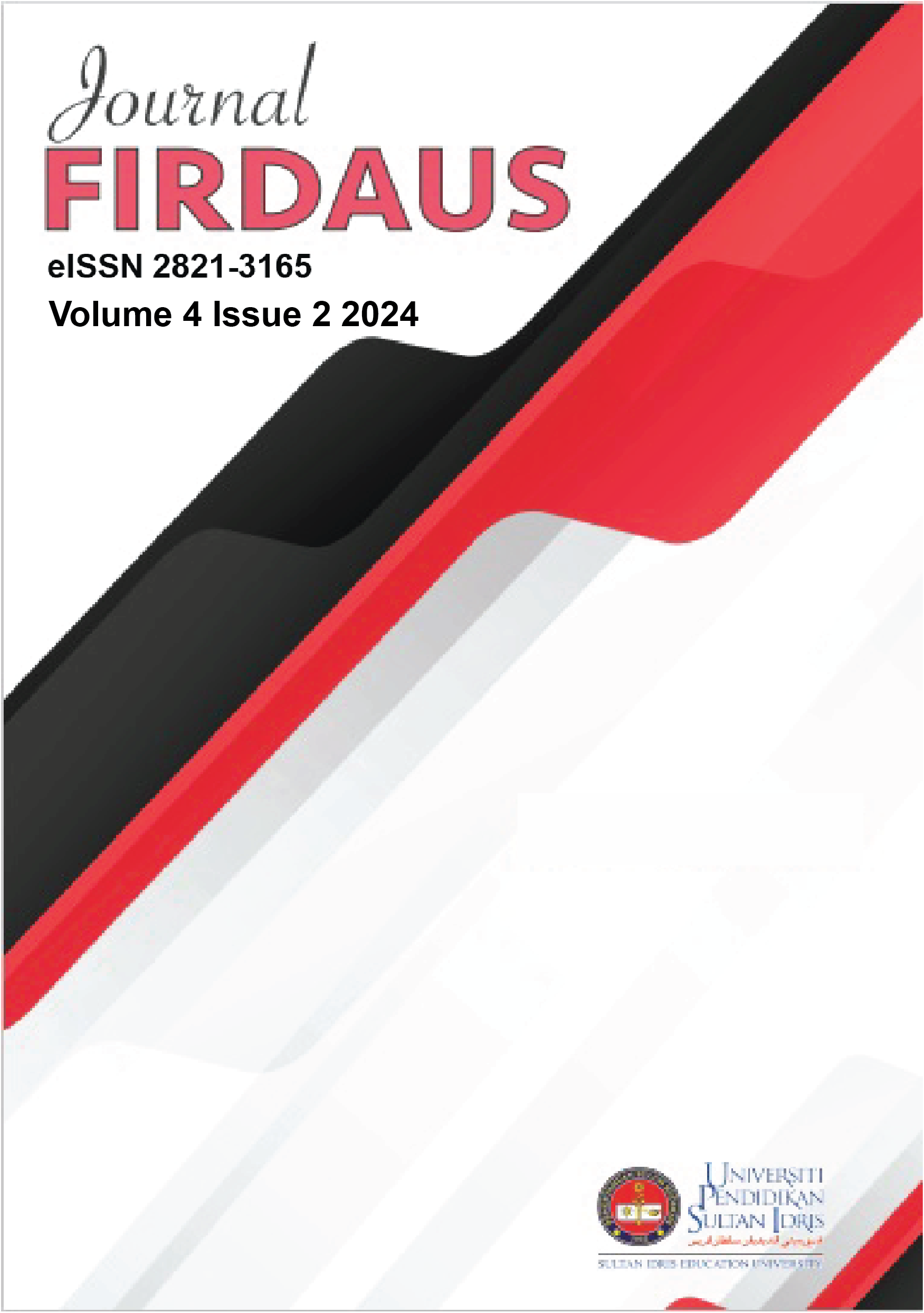Utilising Mobile Phone Applications to Enhance Arabic Language Communicative Skills among Islamic Studies Undergraduates in Ekiti-State University, Nigeria
Mobile-phone, Arabic aspect, undergraduate Islamic Studies students, Ekiti State University
DOI:
https://doi.org/10.37134/firdaus.vol4.2.5.2024Keywords:
Mobile-phone, Arabic aspect, undergraduate Islamic Studies students, Ekiti State UniversityAbstract
This paper extensively explored students’ aptness to mobile learning and their perceptions about their application and difficulties of using mobile phone applications in Islamic Studies communicative skills. The participants are undergraduate students studying Islamic Studies at Ekiti State University Ado Ekiti. To collect data, a questionnaire is used on whether Arabic students use their mobile phones as educational tools while learning, reading Arabic aspect of Islamic Studies and how they give the interpretation. The results showed that, the use of mobile phone is gradually becoming popular among undergraduates of Ekiti State University. Learners used a variety of applications as educational tools outside the classroom. However, the results indicated a lack of adequate support on the part of many teachers who either do not allow the use of mobile phones in class or provide limited guidance for using mobile applications in independent learning. Results also showed that students use a variety of mobile applications to support their learning Arabic aspect of Islamic Studies although they mostly use them informally without their teachers‟ direction or guidance, and sometimes face technical and functional challenges. The results showed that many Islamic Studies students have a generally positive attitude toward using mobile-phones in aspect of Islamic Studies. Based on the findings, it was suggested that, in order for Islamic Studies students to take advantage of the available mobile phone applications, Teachers should be more involved in guiding the students on reliable applications and helping them in effective use of these Arabic applications.
Downloads
References
Al Aamri, A., & Suleiman, K. (2023). The Learning of English Language by Sultan Qaboos University Students: Practices, Attitudes and challenges.
Abachi, H. R., & Muhammad, G. (2021). The impact of m-learning technology on students and educators. Computers in Human Behavior.
Al-Busaidi, S., Tuzlukova, V. (2023). Learner Autonomy support in EFL Classroom: Students’ perspective. In S. Al-Busaidi, & V. Tuzlukova (Eds.), General Foundation Programmes in Higher Education in the Sultanate of Oman: Experiences, Challenges and Considerations for the Future. Muscat: Mazoon Press and Publishing.
Bosch, T. E. (2017). Using online social networking for teaching and learning: Facebook use at the University of Cape Town. Communication: South African Journal for Communication Theory and Research.
Brown, T. H. (2015). Towards a model for m-learning in Africa. International Journal on E-learning.
Chinnery, G. M. (2018). Emerging Technologies: Going to the Mall: Mobile Assisted Language Learning. Language learning & technology.
Eren, Ö. (2019). Students‟ attitudes towards using social networking in foreign language classes: A Facebook example. International Journal of Business and Social Science.
Fisher, M., & Baird, D. E. (2017). Making mLearning work: Utilizing mobile technology for active exploration, collaboration, assessment, and reflection in higher education. Journal of Educational Technology Systems.
Hafner, C. A., & Miller, L. (2022). Fostering learner autonomy in English for science: A collaborative digital video project in a technological learning environment. Language Learning & Technology.
Hussien, A. M. (2018). Culture of traits in Islamic Studies education: Students’ perception of the communicative traits model. International Journal of Instruction.
Johnson, L., Adams, S., and Cummins, M. (2020). Technology Outlook for Australian Tertiary Education: An NMC Horizon Report Regional Analysis. Austin, Texas: The New Media Consortium.
Keengwe, J., & Bhargava, M. (2021). Mobile learning and integration of mobile technologies in education. Education and Information Technologies.
Mahat, J., Ayub, A. F. M., & Luan, S. (2019). An assessment of students‟ mobile self-efficacy, readiness and personal innovativeness towards mobile learning in higher education in Malaysia. Procedia-Social and Behavioral Sciences.
Mat, H. & Wan Abas, U. (2016. The relevance of Arabic Language in Islamic Studies program: A case study of Open University Malaysia, Journal of Education and Sciences.
Taylor, J., (2005). Towards a theory of mobile learning. Proceedings of Mobile Learning.
Shamsuddin, S. M., & Ahmad, S. S. B. H. (2017). Contemporary issues of teaching Arabic in Southeast Asian Countries (Brunei, Malaysia and Indonesia for the example). Journal of Research in Humanities and Social Science.
Shin, D. S. (2019). ESL students‟ computer-mediated communication practices: Context configuration. Language Learning & Technology.
Taha, H. & Haddad, E. S. (2017). Morphology and spelling in Arabic: Development and interface. Journal of Psycholinguistic Research.
Wekke, I. S. (2017). Arabic teaching and learning material in higher education of Muslim Community North Sulawesi. Dinamika Ilmu.
Zailani, S., (2014). Public need for an Islamic Studies teaching and learning module: Using Al Qur’an approach. Mediterranean Journal of Social Sciences.
Downloads
Published
Issue
Section
License
Copyright (c) 2024 Ibrahim Solahudeen Owoyale-Abdulganiy, Lateef Adebowale Jamiu, Isiaq Oluwatosin Yahya

This work is licensed under a Creative Commons Attribution-NonCommercial-ShareAlike 4.0 International License.





